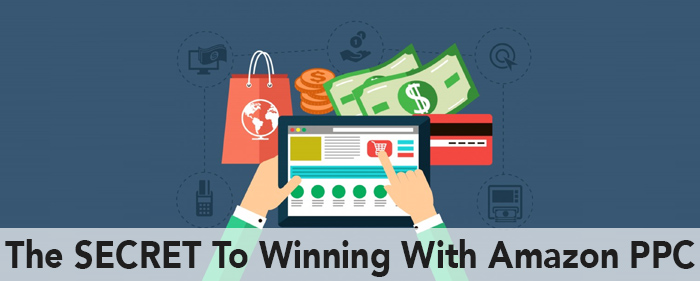
Hi, and welcome to this ‘first of the month’ blog post, thanks for visiting!
If this is your first time on AidanBooth.com, welcome, this blog started way back in May 2012, and has been delivering monthly tactic and strategy updates ever since.
The focus today is how you can use paid Amazon ads, to boost Amazon product sales, and the exact strategy that we’ve used to launch success after success on Amazon. This is without doubt one of the SECRETS to winning on Amazon.com.
This blog post is based on a special training workshop Steve recently held, to download the full length video, click the button below:
You’re about to discover how we strategically use paid Amazon ads to catapult our products to the top of Amazon, and establish top rankings, and an avalanche of organic sales in the process.
Who Is This Training For?
If you’re currently selling physical products on Amazon, or WANT to sell physical products on Amazon, then this is MUST READ training.
Why Should You Listen To Our Advice?
Good question 🙂
Here’s why:
- Our company has about 25 products listed on Amazon.
- We will do approximately $3.5 million in sales JUST on Amazon in 2017.
- We’ve provided hands on consultation in the launching of HUNDREDS of Amazon products (through out Blueprint Academy mastermind program).
- We spend thousands per day on paid Amazon ads.
The bottom line is this… we’re in the trenches WORKING our Amazon strategy every day, and we use a very specific Amazon PPC (pay per click) advertising process which is 100% proven to work.
Chaos & Confusion…
Unfortunately, most people we talk to are confused by Amazon PPC, and struggle to make the right decisions.
- They’re confused about the goal of running PPC campaigns.
- Unsure how to make strategic decisions.
- Not sure of the right way to target keyword phrases.
- Baffled by a lack of clicks and ad exposure.
- Have no idea of what to expect from an ad campaign.
- Unsure when to make changes to campaigns.
- Unable to quantify their results.
So… most Amazon seller just give up, and those that continue to run ads are ‘flying blind’, without truly understanding the process.
3 Distinct Goals
We run Amazon PPC campaigns to achieve three main objectives:
- Get rankings for our keywords
- Maintain our keyword rankings
- Increase profitable sales
We recommend working to achieve these goals in two different phases, it’s hard to achieve all three things at one.
The way it typically unfolds is:
- We achieve rankings for our target keywords in the first few months by running both automatic and manual campaigns at ‘break-even’ (or even at a loss initially).
- Once we have keyword rankings for our top 3-5 keywords, we continue to run ads to help us maintain our rankings.
- In addition to maintaining rankings, we focus on making our Amazon PPC ads more profitable.
One of the key concepts you need to understand is Keyword Phrases, and how they work…
Keyword Phrases
Keyword phrases are search terms that people use to find products in Amazon.
For example, “yoga mat” is a phrase someone might search for in Amazon if they’re looking to buy a yoga mat.
In most instances, the keyword phrases you’ll want to rank for are common sense.
One way to give your selection of keywords a ‘sanity check’, to make sure you’re targeting the right ones, is to analyze the Amazon listings of your top competitors.
Look for common keywords used in the titles of your top performing competitors, and check they match with what you’re planning on targeting (chances are that your top performing competitors already have all the keyword data, and have worked the most important keywords into their listings).
For the most part, you won’t find many surprises when it comes to what the top performing keywords are.
We normally target rankings (and track) between 3-5 keywords, and that’s it. We’ve found that by focusing in on 3-5 search terms, we can capture 90% of the potential sales volume (with the remaining 10% spread across HUNDREDS of different search terms).
How To Use Your Keyword Phrases
The best keyword phrases should be worked into your listing (this has a huge impact on keyword rankings in Amazon and in your manual PPC campaigns (more on this shortly).
We also use the rankings of keyword phrases to track the effectiveness of PPC campaigns, and to guide you on your strategies and tactics.
When To Use The Keyword Phrases
The first time you’ll use keywords are during the product launch phase, when you’re launching your product on Amazon for the first time.
Some recommendations for this phase include:
- Use common sense. Use competitor listings to pick out the top 3-5 keyword phrases.
- Check to ensure that the top 3 competitors rank on the first page of Amazon for your chosen 3-5 keyword phrases (this is another sanity check that ensures the keywords you’re going after are the right ones to target)
- Use your target keywords to build your Amazon listing.
The ‘Achieve Rankings’ Phase
All new campaigns start out in the ‘Achieve Rankings Phase’, this is where you’ll be for at least the first 30 days.
The goal of running Amazon PPC ads in the first 30 days is to achieve rankings.
After 30 days we recommend you download the Amazon PPC search term report (you get this from inside the Seller Central dashboard), and use it to check for missed keywords, keywords that:
- Have a high number of impressions
- A high level of relevancy
- Sales from your PPC ads
Cross-check these keywords with your competitors listings, and if you think they’re keywords that will result in sales (based on the statistics you’ve now got), then incorporate them into your listing, and if you think they’re in the ‘top 5’ of all possible search terms, make them your ‘targets’, and monitor them accordingly.
NOTE: We never target MORE than 5 keywords at a time. So if you’re adding new keywords in, make sure you end up with no more than 5. The 5 keywords you have at this stage should now be the final keywords that you’ll track as you move forward (and these 5 keywords will be what you use in your manual PPC campaign).
Achieve Rankings Phase: Step 1
At this point, you’ve just launched a product, or perhaps you have a product that isn’t performing well, so you’re doing a re-launch.
Two important recommendations during this phase include:
1. Turn on your ‘Auto’ campaign immediately
The moment you launch your product, turn on your Auto PPC campaign.
2. Start with a bid of between $0.90 and $1.50, and a budget of $50/day
Don’t worry… you won’t actually end up spending $50 per day, in most cases you’ll likely be at more like $5 per day. You’ll also normally be spending far less per click than $1.50. These are just initial starting metrics, and we’ll optimize them as the process continues.
The reason we like to have a higher daily budget, is that it allows you to get better results from your campaigns. It’s almost like Amazon takes you more seriously.
Running PPC campaigns takes guts… you need to hold firm initially, EVEN if you’re not making profit right away. If you stop a campaign after just three or four days, it’s a complete waste, and you would have been better to never start it to begin with.
Your focus initially should be to get traffic, and to improve your conversion rate.
One of the biggest factors that impact conversion rate initially is reviews, try to get a foundation of 15+ reviews. Make sure your price is also well optimized, we often start out with prices that are MUCH cheaper than we actually intend on selling for, but this is just to help stimulate sales momentum.
Your conversion rate overall, as shown inside Seller Central, should ideally be 5% or more.
Performance Analysis During The ‘Achieve Rankings’ Phase
After running your ads for a week, you should be building some useful data. A few benchmarks to use to gauge your performance are:
- Ratio of 1% for impressions to clicks. So, if you ad gets 1,000 impressions, you should hopefully be getting 10 clicks. If you have an impression-to-click ratio of 0.5% or less, then you need to consider your listing. Do you have a poor picture? A pricing issue? Or something else?
- Ideally you’ll be getting 20 – 100 visitors per day. If not, check to see your bid and budget has been set high enough.
- Don’t worry about your ACOS score yet. After one week you won’t have a big enough population sample to make any judgments from this data anyway.
TIP: Only evaluate ads once per week. If you need to adjust your bid, do it by a maximum of 20% at a time, until you start to hit the benchmark numbers shown above.
After 30 Days, Review Results
After running your ads for 30 days and getting between 20-100 clicks/day, you’re in monthly review mode. At this point you should only monitor your campaign once per month, and make changes only once per month.
Why only check results every 30 days?
- Amazon stats are delayed, so there’s no point at all in checking daily
- You need a big enough population sample to make informed, and statistically significant decisions
The first check after 30 days can also be used to confirm, once again, that your chosen 3-5 target keyword phrases are indeed correct.
Achieve Rankings Phase: Step 2
After 30 days, we keep running the auto PPC campaigns, but also start running manual PPC campaigns for our target keywords.
The manual campaigns only have 3-5 keywords in them, and we typically use the ‘phrase match’ option. If you’re at the lower end of the 20-100 clicks/day, then you should use all three match types.
Manual Campaign Configuration
When setting up a manual campaign, use the same bids and budgets that were used in the automatic campaign setup ($0.90 – $1.50, and $50/day).
The manual campaign should get approximately 20-100 clicks per day. Adjust your bid and budget to achieve this. Just like when starting the automatic campaign, monitor your results once per week, and adjust bids up or down by a maximum of 20% at a time.
Eventually you’ll reach a ceiling where, no matter how much you change your bids, you just can’t get more traffic. This is fine, it just means you’re getting all you’re ever going to get out of your target keywords.
Don’t worry about your ACOS scores during the first couple of weeks of a manual campaign, you can start analyzing this after one full month, once you’ve got more data.
After 30 Days Of Manual Campaigns, Review Results
Just like with the automatic campaign, after a manual campaign has been running for 30 days, and getting 20-100 clicks/day, you are then in monthly review mode, and from this point on, should only monitor and make changes to your manual campaign once per month.
A few questions you might have at this point are:
Why Run Manual AND Automatic Campaigns?
Manual campaigns allow you to incrementally increase your traffic, and also fine-tune your bidding for specific keywords (so you get a higher ROI).
Won’t Manual and Auto Campaigns Compete With One Another?
Yes, they do a little bit. But they also increase clicks and sales, which is all we really care about.
Does This Process Need To Be Followed For All Products?
Yes, which is one of the reasons we don’t recommend you launch more than a couple of products at a time.
What Is Conversion Rate?
A percentage that shows the number of sales, divided by the number of visitors. If you get 100 people visit your Amazon listing, and 12 people buy, then that is a conversion rate of 12%.
What Are Impressions?
In relation to Amazon PPC, impressions are the number of times your ad is shown.
What Is ACOS?
ACOS is an Amazon metric that you’ll find in the PPC reports of Seller Central, it stands for “Average Cost Of Sales”. We’ll discuss this in more detail shortly.
Achieve Rankings Phase: Step 3
The third step of the ‘Achieve Rankings Phase’ is the systematic reviewing of your campaigns.
Here’s what we do each month:
- Evaluate bids
- Change the bids and budget to maintain 20 – 100 clicks/day on both campaigns (manual and auto)
- If ACOS is less than 60%, increase bid by 20% (regardless of the number of clicks)
- Check keyword rankings – are all 3-5 keywords on page one of Amazon? If so, you’ve reached your goal for this phase!
If you haven’t reached your goal yet, KEEP GOING!
Focus on improving your conversion rate, look at leveraging other traffic sources (such as Facebook), and work on getting more reviews.
The ‘Maintain Rankings’ AND The ‘Increase Profitable Sales’ Phase
We move into the ‘Maintain Rankings’ phase AND the ‘Increase Profitable Sales’ phase once our product is ranking on page one of the Amazon search results for all 3-5 of our target keywords.
In these phases (which we can focus on simultaneously), we want to make sure our ads are profitable, and continue to increase ROI. It’s possible to increase profitable sales and maintain rankings at the same time, which is why we focus on both of these things at once.
Recommendations here include:
- Evaluate results every 30 days
- Target a 50% – 100% ROI. For every dollar we spend, we make back between $1.50 to $2.00 (for a profit of $0.50 or $1 for every $1 spent).
- ACOS target is ½ to ¾ the profit margin
ACOS example:
- Profit margin = 50%
- Ad cost = $100
- Sales from ads = $400
- ACOS = 25%
- Profit = $200
- ROI = 100%
To improve profitability, you should decrease your PPC bids, WITHOUT losing keyword rankings. Our rule of thumb for BOTH the automatic and manual campaigns is:
- If rankings dropped from the first page in the first month, do nothing.
- If rankings dropped and are still not back on the first page after your second month, move back into the ‘Achieve Rankings’ phase
- If ACOS target is not met, decrease your bid by 10% – 15%
TIP: Use A Marketing Journal!
We track all the changes we make in a marketing journal. It doesn’t really matter what format you do this in, just that you note down everything you do each month (it’s invaluable to look back at historic changes when analyzing performance deviations).
Manual Campaigns With 100+ Keywords?!
Some marketers do this, but we don’t recommend it.
90% of the traffic will come from 4-5 keywords… by focusing JUST on the best keywords, you save yourself a huge amount of time, which can be invested into other parts of your business.
What Can You Do Right Now?
Evaluate where you’re at in the phases explained above.
Have you decided on your top 3-5 keywords phases?
If not, get them.
Are you in the top 5-10 spots on page one of Amazon’s search results?
- YES: Maintain rankings and Increase profitability
- NO: Start in the ‘Achieve Rankings’ phase
Is your conversion rate okay?
- YES: Aggressively pursue PPC goals
- NO: Test to get it to where it needs to be before aggressively pursuing PPC goals
- Focus on pricing, pictures, title and description
- Remember to only check results after you’ve received a statistically significant sample size (250+ clicks)
BlackBird = Our SECRET Weapon
BlackBird is the ultimate tool for tracking your key metrics, and providing you with cutting edge Amazon seller training.
BlackBird gives you the ability to easily:
- Track your products, sales, reviews, pricing, and ranking
- Search the Amazon marketplace for the best new opportunities
- Analyze monthly earning of ANY product on Amazon
- Spy on your competition
- Analyze on-page performance metrics
- Alert you to problems related to your products
- Send emails to your customers (to generates reviews and more sales)
- Learn ALL the secrets to selling on Amazon (via 71 training videos)
- To ask Steve, me, Matt Carter (partner), and our team of ‘Gurus’ ANY Amazon selling related question ANY TIME you want to using our unique ‘Grab A Guru’ strategic support system
You can find out more about BlackBird here:
Leave A Comment Below!
If you’ve got any questions or comments about the strategy shared today, or anything else, leave a comment below.
Thanks for reading,
Aidan Booth







I saw Steve give a presentation about this somewhere, it’s great stuff, very applicable. Thanks team.
This is based on Steve’s BlackBird presentation Rob, perhaps that’s where you saw it..
This comes at a great time for me, because I’m just trying to rejuvenate one of my Amazon products, thanks Aidan. I’m sure I’ll have more questions later 🙂
AWESOME!
Thanks, Aidan! I’m old school in that I like a written guide, so this will really help optimize our PPC campaigns.
Glad to hear that Chris! Let me know how things go for you 🙂
I have great proprietary products (with no similar product competition). Very high quality products and low prices. Sales on Amazon have been improving over past year but not to the point of being profitable. Limited funds and overwhelmed with the technical aspects of marketing. What are your suggestions?
Hi Terrell. We never really launch ‘inventions’… we create great products, but go into a known market so that we KNOW the potential sales growth. Without knowing more about your product, it’s hard to suggest a path forward..
Great post Aidan,
We look forward implementing these strategies once our product
goes live in the next few weeks.
Awesome Scott, good luck!
GREAT , AIDAN . I AM A VISITOR FROM THE 100K FACTORY .
Steve & aiden All your information is always invaluable. Not on Amazon yet but know where to turn to when I do ! From 100K Factory. Cheers Alison
Awesome 🙂
Hi Aidan,
Hope all is well,
I’ll be in Buenos Aires for 12 hours Wednesday 26 of April (tomorrow), PayPal invited me. If you are free I’d love to meet you,
Sorry for the short notice,
Andres
Hi Andres, I’m so sorry, I’ve just seen this.. and, I’ve been in New Zealand for the past 10 days anyway. Let me know next time, and we’ll catch up 🙂
Which tool I can use for Amazon Keyword Research
I may be slightly biased here, but I think BlackBird is without doubt the best tool for Amazon research available on the web. See details at http://www.blackbirdsuite.com
Hey Aidan,
I have been doing PPC on Amazon blindly for about 6 months. It has been doing good I think. I have keywords in the back end but I don’t think I am am using PPC 100% correct. My product is on the top page in amazon and is dominating the whole page!!! This is great but I would like to be mentored in fine tuning my campaigns and get more profit. I also am starting an other product that is new and will be using these steps and guides. I would like to see if you would work with me and my business to step to the next level?
Thank you for this article
Matt
Hi Matt, sounds very exciting! Contact our team, Steve is VERY good at PPC, especially Google, and may be able to help: support@blueprintcentral.com – thanks
Aidan as usual your advise is so thorough. I look forward to tapping into it in the next couple of months.
Hi Aidan,
I’m a member of BlackBird. The training here on your blog is simpler and different than the training on BlackBird from Matt Carter. I believe it’s all “manual targeting or manual campaigns he’s is showing on his videos.
Which one is “correct”?!!! And, which one is overall easier?
Thanks!
Hi Kristie, either approach will work well.. if you find my guide simpler, start with that, and you can modify things once you get the hang of it. 🙂